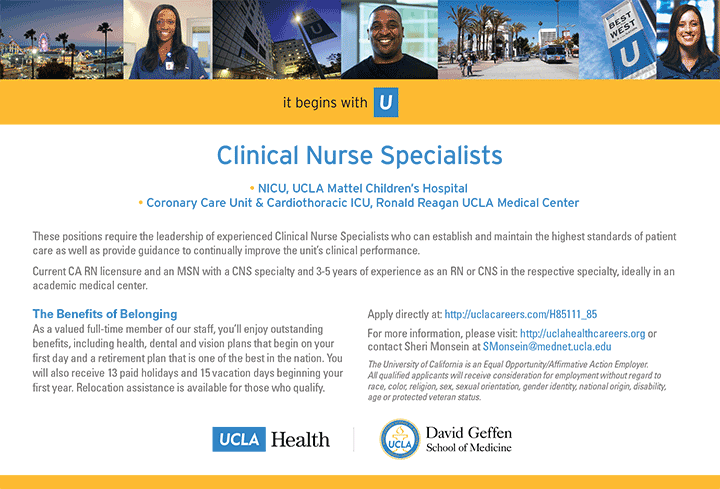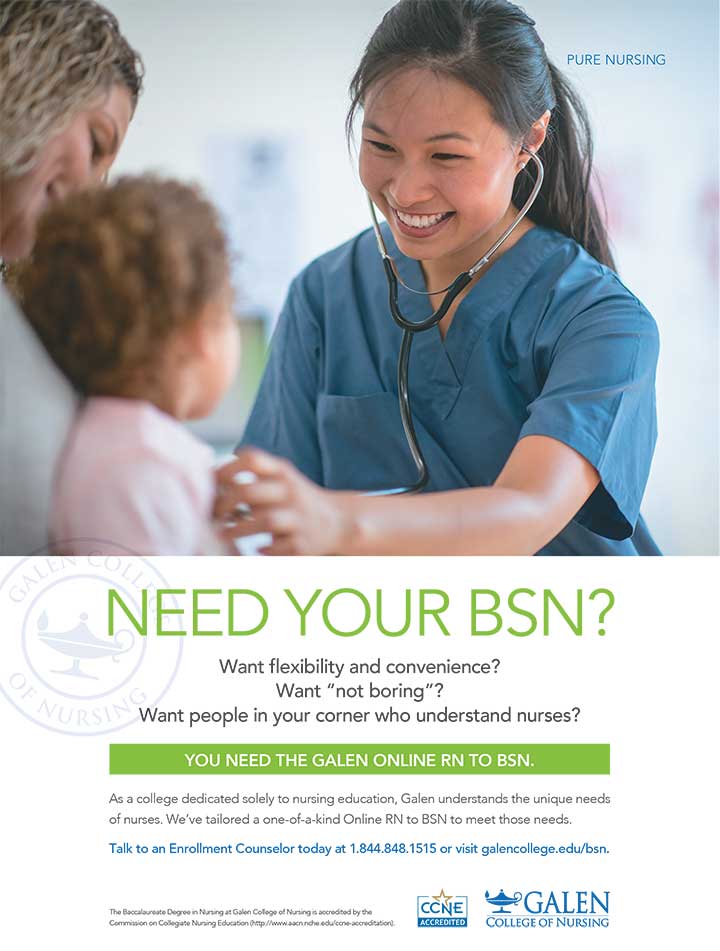Combining skills and knowledge from different disciplines enhances patient care.
By Joanne Disch, PhD, RN, FAAN
In 2003, the Committee on Health Professions Education of the Institute of Medicine released a report recommending that “All health professionals should be educated to deliver patient-centered care as members of an interdisciplinary team, emphasizing evidence-based practice, quality improvement approaches, and informatics.” Thus, a common recommendation was directed to all health professions’ schools to ensure their graduates are competent in these five areas. Through its work in the Quality and Safety Education for Nurses (QSEN) initiative, the nursing community divided quality improvement into two competencies, resulting in a sixth area—safety.
One of the most challenging of these competencies to master is teamwork and collaboration. Historically, students in one discipline learn the content relevant to their profession but have little experience interacting with students from other disciplines. For example, in a survey asking nursing faculty from 22 schools about their students’ experiences in interprofessional (IP) learning, results showed that only 18% of students had participated in IP courses. In many cases, when students from one healthcare discipline (for example, medical school students) do attempt to practice teamwork with another healthcare discipline (for example, nursing), the approach has been to have another medical student play the role of the nurse. The same is true for many nursing schools. What we’ve routinely seen, then, are new clinicians with little authentic experience communicating with, understanding, valuing, or partnering with colleagues from other disciplines.


Interprofessional education defined
Interprofessional education (IPE), as defined by the World Health Organization, occurs “when students from two or more professions learn about, from, and with each other to enable effective communication and improve health outcomes.” The benefits to students include the following:
• They learn about each other’s scopes of responsibility and roles so that the particular expertise that each
brings can be used to improve patient care.
• They can identify strengths in other team members that may complement or enrich their own practice.
• They’re more likely to ask for help or speak up to help someone else if they’ve established an interprofessional
relationship.
• They develop more effective problem-solving skills as a result of working with people with differing points of
view.
• Their communication skills improve, which is particularly important in high-risk situations such as handoffs
or a patient crisis.
• Their patient care is safer and more personalized as a result of sharing vital information.
• They enjoy their work more because they’re part of a team that values all members for what they bring and
who they are.
IPE doesn’t take the place of nursing students learning to be excellent clinicians, but since health care is a team effort, students need to learn how to work effectively with colleagues. (See Teamwork and collaboration competency.)
Teamwork and collaboration competency |
| Cronenwett and colleagues identified the following knowledge, skills, and attitudes needed to function effectively within nursing and interprofessional teams to foster open communication, mutual respect, and shared decision-making to achieve quality patient care.
|
Knowledge – Describe own strengths, limitations, and values in functioning as a team member | Skills – Demonstrate awareness of own strengths and limitations as a team member – Initiate plan for self-development as a team member – Act with integrity, consistency, and respect for differing views | Attitudes – Acknowledge own potential to contribute to effective team functioning – Appreciate importance of intra- and interprofessional collaboration | ||
– Describe scopes of practice and roles of healthcare team members – Describe strategies for identifying and managing overlaps in team member roles and accountabilities – Recognize contributions of other individuals and groups in helping patients and families achieve health goals | – Function competently within own scope of practice as a healthcare team member – Assume role of team member or leader based on the situation – Initiate requests for help when appropriate to situation – Clarify roles and accountabilities under conditions of potential overlap in team member functioning – Integrate the contributions of others who play a role in helping patients and families achieve health goals | – Value perspectives and expertise of all healthcare team members – Respect the centrality of patients and families as members of any healthcare team – Respect the unique attributes that members bring to a team, including variations in professional orientations and accountabilities | ||
– Analyze differences in communication style preferences among patients and families, nurses, and other healthcare team members – Describe the impact of own communication style on others – Discuss effective strategies for communicating and resolving conflict – Describe examples of the impact of team functioning on safety and quality of care – Explain how authority gradients influence teamwork and patient safety | – Communicate with team members, adapting own style of communicating to needs of the team and situation – Demonstrate commitment to team goals – Solicit input from other team members to improve individual and team performance – Initiate actions to resolve conflict – Follow communication practices that minimize risks associated with handoffs among providers and across transitions in care – Assert own position and perspective in discussions about patient care – Choose communication styles that diminish risks associated with authority gradients among team members | – Value teamwork and the relationships upon which it is based – Value different styles of communication used by patients, families, and healthcare providers – Contribute to resolution of conflict and disagreement – Appreciate the risks associated with handoffs among providers and across transitions in care | ||
– Identify system barriers and facilitators of effective team functioning – Examine strategies for improving systems to support team functioning | – Participate in designing systems that support effective teamwork | – Value the influence of system solutions in achieving effective team functioning | ||
| Source: Cronenwett L, Sherwood G, Barnsteiner J, et al. Quality and safety education for nurses. Nurs Outlook. 2007;55(3):122-31. Copyright 2007, reprinted with permission from Elsevier. | ||||
What’s necessary for effective IPE?
Several schools have launched ambitious programs in an attempt to provide meaningful teamwork and collaboration experiences. These programs take various forms, including having students from different professions taking courses together, collaborating on shared projects, working together in interprofessional clinics, and conducting simulation exercises. Some programs are effective, some are not.
As Deborah Powell, former dean of the School of Medicine at the University of Minnesota, once noted: “Sitting together in a class does not an interprofessional experience make.” Barnsteiner, along with nursing and medical colleagues, provides a comprehensive review of the history of IPE and suggests six criteria essential for effective IPE. (See Criteria for full engagement of interprofessional education.)
How to get the most out of IPE
If you’re a nursing student, what can you do to get the most out of learning with students from other professions or disciplines?
Get to know the other students. Who are they, where are they from, why did they choose their particular profession? If you’re in a large class, pick out a few students and get to know them as individuals. Be ready to answer questions about why you chose nursing.
Learn about the scope of their profession or discipline. What are the common patient and family problems your fellow students focus on? What are the particular content and skill areas that are essential for them to learn? Where do they see themselves practicing?
Engage fully in joint learning experiences. Your nursing curriculum is critically important, but in today’s healthcare environment, understanding what all team members bring to patient care is equally important. Seek out classes or learning experiences with other students. If they’re not available, talk with your faculty about creating some. (See Criteria for full engagement of interprofessional education.) The QSEN website (www.qsen.org) provides some excellent examples that faculty have developed and posted for others to use.
To ensure an effective interprofessional education (IPE) program, Barnsteiner and colleagues developed these six criteria. 1 An explicit philosophy of IPE permeates the organization. The philosophy is well known, observable, and measurable. 2 Educators from the different professions co-create the learning experiences. 3 Students have integrated and experiential opportunities to learn collaboration and teamwork and how it relates to the delivery of safe, quality care. 4 IPE learning experiences are embedded in the curricula and are part of the required student course load. 5 Students demonstrate a single set of interprofessional competencies, such as those promoted by the Institute of Medicine. 6 The organizational infrastructure fosters IPE, including support for educator time to develop IPE options, incentive systems for educators to engage in IPE, and integrated activities across schools and professions for students and educators. Source: Barnsteiner JH, Disch JM, Hall L, Mayer D, Moore SM. Promoting interprofessional education. Nurs Outlook. 2007;55(3):144-50. Copyright 2007, reprinted with permission from Elsevier. |
Seek to understand their special skills. Using a case study about a complex patient situation with a diverse group of students often elicits solutions that any of the students alone wouldn’t have identified. This is also true in the clinical setting among healthcare professionals, which is why learning with, from, and about each other is so crucial. For example, when nursing and occupational health students got together and examined how to transition a patient home after a stroke, the two groups focused on different concerns. The nursing students expressed concern about mobility and safety in preventing falls, while the occupational health students wondered how the patient would maneuver in the kitchen at home or even open up a can of soup.
Be open to creative learning opportunities. IPE can work well with students from any profession or discipline. Many nursing schools don’t share a campus with a medical school, so for their nursing students, most IPE occurs by working with students from outside of health care. However, any field of study can offer fascinating learning opportunities. For example, working with students from a college of design can provide insight into human factors and safety science; students of ergonomics can provide a new perspective on body mechanics. Learning is limited only by the creativity of those seeking to learn. What might you learn from students in a music school, a college of pharmacy, or a center for performing arts?
Facilitating patient care
Healthcare complexity requires active involvement and collaboration to facilitate problem-solving, enhanced care delivery, and quality improvement. No one profession or discipline has all of the knowledge or skills. By pooling our insights and experiences, we can improve patient care and our own performance.
Joanne Disch is professor ad honorem at the University of Minnesota School of Nursing in Minneapolis.
Selected references
Barnsteiner JH, Disch JM, Hall L, Mayer D, Moore SM. Promoting interprofessional education. Nurs Outlook. 2007;55(3):144-50.
Cronenwett L, Sherwood G, Barnsteiner J, et al. Quality and safety education for nurses. Nurs Outlook. 2007;55(3):122-31.
Disch J, Barnsteiner J, McGuinn K. Taking a “deep dive” on integrating QSEN content in San Francisco Bay Area schools of nursing. J Prof Nurs. 2013;29(2):75-81.
Health Professions Networks Nursing & Midwifery Human Resources for Health. World Health Organization. Framework for action on interprofessional education & collaborative practice. 2010. http://apps.who.int/iris/bitstream/10665/70185/1/WHO_HRH_HPN_10.3_eng.pdf?ua=1
Institute of Medicine. Health Professions Education: A Bridge to Quality. Washington, DC: National Academies Press; 2003.
Additional resources – Agency for Healthcare and Research Quality. U.S. Department of Health and Human Services. Teamwork training. Last updated July 2016. https://psnet.ahrq.gov/primers/primer/8/teamwork-training – Interprofessional Education Collaborative (IPEC®). Core competencies for interprofessional collaborative practice: 2016 update. www.aacn.nche.edu/education-resources/IPEC-2016-Updated-Core-Competencies-Report.pdf – Körner M, Bütof S, Müller C, Zimmermann L, Becker S, Bengel J. Interprofessional teamwork and team interventions in chronic care: A systematic review. J Interprof Care. 2016;30(1):15-28. – National Center for Interprofessional Practice and Education. https://nexusipe.org/ – Robert Wood Johnson Foundation. Lessons from the field: Promising interprofessional collaboration practices: White paper; 2015. https://goo.gl/hf41jZ |






















